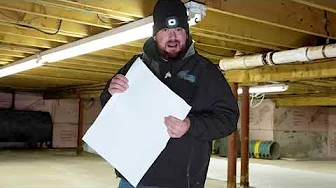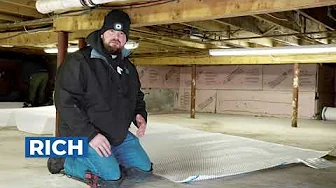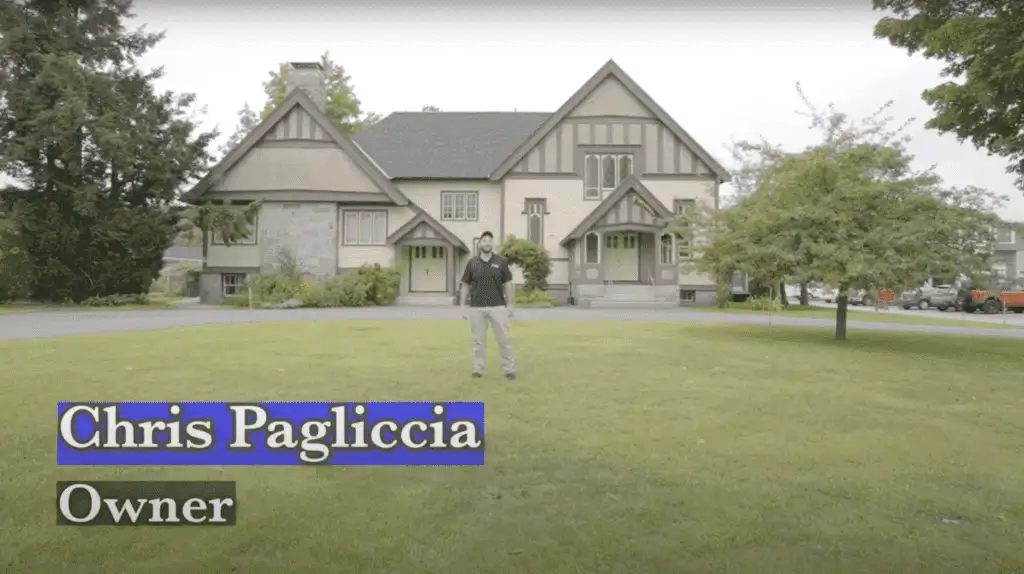Foundation Crack Repair Wellesley MA
Foundation cracks are more than just an eyesore. Left unchecked, they can lead to costly structural problems, reduce property value, and even pose safety risks. Homeowners in Wellesley, MA, should address foundation issues promptly to protect their homes and ensure long-term stability.
Real People - Real Great Results
Crawl Space Video Playlist
Identifying the Signs of Foundation Cracks
Letting foundation cracks slip under your radar is asking for trouble. The good news? Your home is always giving you clues—you just need to know where to look. Start with the obvious: cracks in exterior walls. These come in various flavors, like the vertical lines of settling, diagonal scars caused by uneven soil pressure, or the dreaded stair-step cracks often pointing to structural stress. Sure, not every crack spells doom, but ignoring them isn’t exactly a winning strategy.
Move indoors, and the signs can get even more telling. Gaps in drywall, floors that seem to waver like bad camera angles in a horror movie, and doors or windows that inexplicably stick are all bright, flashing signals. They suggest that your foundation might not be as rock-solid as you’d like to believe.
Then there’s the basement—the home’s underbelly and often the first place foundation issues make their debut. Spot water seepage or concrete walls riddled with fissures? That’s not just bad luck; it’s your house warning you that deeper problems could be forming.
The takeaway is simple: if you see any of these signs, don’t shrug them off. Foundation issues rarely improve on their own, and waiting will only push you closer to structural headaches and hefty repair bills.
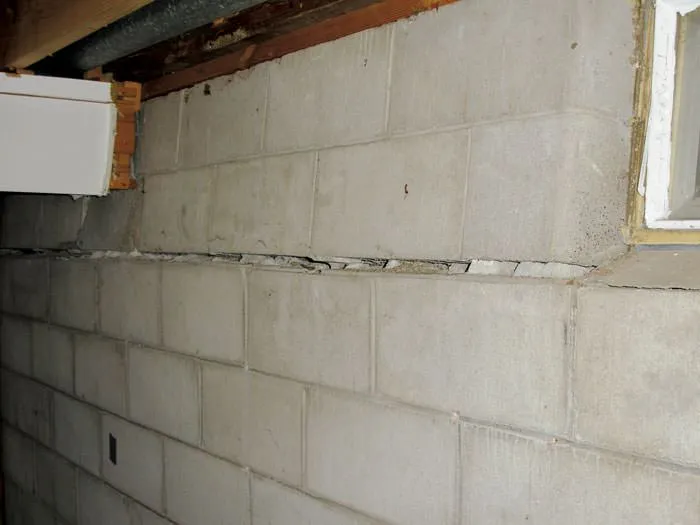
Causes of Foundation Cracks
Foundation cracks don’t just happen out of nowhere—they’re the result of forces your home can’t always control. The main culprit? Soil movement. When Wellesley’s soil expands during rainy stretches or contracts in dry spells, it creates stress that your foundation tries (and sometimes fails) to handle. And then there’s water damage, another repeat offender. Poor drainage, backed-up gutters, or rising groundwater can apply enough pressure to make even the sturdiest concrete cry uncle.
Sometimes, though, the issue starts early: poor construction. Maybe a builder cut corners on materials or didn’t lay the groundwork properly. If your foundation didn’t have a good start, it might not hold up when seasonal factors, like freeze-thaw cycles, come into play. These shifts—when moisture in the ground freezes, expands, and then shrinks again—keep your foundation in a constant state of adjustment.
Here’s the thing: figuring out why the cracks are happening isn’t just a checkbox. It’s the key to fixing them right. Identify the enemy, and you’ll know exactly what needs to be done to restore your foundation’s strength.
Types of Foundation Cracks
Not all foundation cracks are created equal. Each type carries its own set of implications, from minor inconveniences to potential structural nightmares. Here’s a rundown of the most common crack types:
- Hairline Cracks: These are the smallest and least alarming of the bunch. Often a byproduct of normal settling, they’re typically superficial and don’t hint at deeper issues. That said, they still warrant periodic checks. Hairline cracks can widen over time, and what starts as cosmetic could eventually shift into something more problematic. Think of them as a “wait and watch” situation.
- Horizontal Cracks: These are the red flags of foundation damage. Horizontal cracks often signal excessive lateral pressure, usually from expanding soil or hydrostatic forces. In plain terms: the ground is pushing against your foundation more than it was designed to handle. If you spot these, don’t delay. Structural integrity could already be compromised, and this isn’t a DIY fix.
- Vertical Cracks: Found running straight up and down walls or slightly diagonal, vertical cracks are often less severe but still worth addressing. They usually appear as homes settle naturally or as a result of minor soil movement. The good news? These cracks are often fixable with simple sealants, provided they’re not significant in width or depth.
- Diagonal Cracks: Diagonal cracks are like the cousins of vertical cracks, but they tend to pack a little more punch. These typically form when the foundation experiences uneven settling or soil pressure that isn’t uniform across the base. Depending on the angle and size, diagonal cracks can range from a minor concern to a major structural issue. Either way, they deserve close inspection.
Identifying the type of crack is more than academic—it’s critical for choosing the right repair approach. Guesswork here can lead to wasted time, money, and effort. Whether superficial or serious, the first step toward a fix is pinpointing what you’re dealing with.
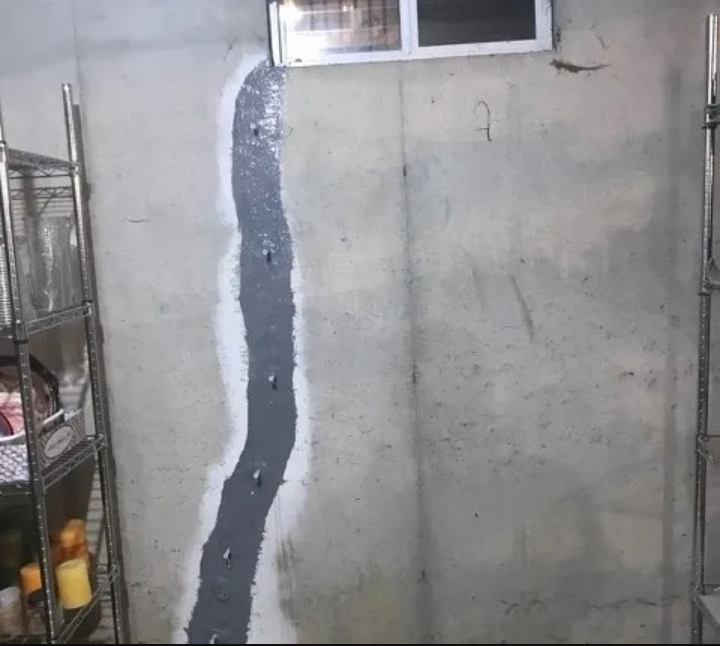
DIY Solutions for Minor Cracks
Not every crack in your foundation means you need to call in the cavalry. For small, stable cracks that aren’t growing or showing signs of structural stress, some DIY solutions can save time and money without compromising your home’s integrity. Here’s how to handle them like a pro.
First, focus on preparation. Think of a crack as a wound—it needs to be cleaned before it can heal properly. Use a wire brush or compressed air to remove dirt, debris, and loose material. This step is critical; skipping it will make even the best sealant fail.
Next, select the right repair material. For narrow cracks up to about 1/8 inch wide, epoxy or polyurethane injection kits are your go-to. These fillers aren’t just stopgaps; they bond with the concrete and even offer some flexibility to accommodate minor shifts. Follow the kit’s instructions carefully—most involve injecting the material with a caulk gun-style applicator to ensure deep penetration.
Finally, seal it up. If water seepage is a concern, consider applying a high-quality waterproof sealant on the cracked area as an extra barrier. This step won’t just patch the crack—it will help keep moisture out, extending the life of your repair.
While it’s tempting to DIY every issue, know your limits. Hairline cracks might be perfect weekend projects, but anything wider, longer, or recurring signals a deeper issue that needs professional attention. Remember, a tube of epoxy might fix the symptom, but it won’t address the cause. Use DIY judiciously and consult experts when the stakes rise.
Professional Foundation Repair Options
When DIY efforts won’t cut it, it’s time to call in the pros. Wellesley homeowners have access to specialized contractors armed with advanced techniques to handle everything from hairline nuisances to gaping issues threatening your home’s integrity. Here’s what they can do:
- Crack Injection: For non-structural cracks, contractors inject epoxy or polyurethane resin to bond the concrete back together. Think of it as stitching the wound closed—effective, precise, and designed to last.
- Carbon Fiber Reinforcement: When walls need extra strength, carbon fiber straps or sheets are applied over troubled areas. Lightweight yet incredibly durable, this method is a go-to for stabilizing bowed walls or reinforcing stress points without adding bulk.
- Underpinning: If your entire foundation is suffering due to shifting soils or significant settlement, underpinning is the heavyweight solution. Using steel piers or concrete pilings, professionals stabilize and sometimes even lift your foundation back to its original position. It’s a major repair, but one that ensures your house stops playing tug-of-war with gravity.
- Drainage Solutions: No repair lasts without addressing water’s role in the problem. Experts may install French drains, improve grading, or add sump pumps to control moisture and reduce hydrostatic pressure on your foundation. It’s less glamorous but just as crucial as structural fixes.
Foundation repair isn’t one-size-fits-all. A seasoned contractor will evaluate your home’s unique challenges, walk you through repair options, and tailor a solution that’s as durable as it is practical. In a place like Wellesley, where homes need to endure fluctuating New England weather, investing in professional repair pays off in stability and peace of mind.
Preventative Measures to Avoid Future Cracks
Keeping foundation cracks at bay isn’t rocket science, but it does demand consistent effort. Start with grading—the slope of the ground around your home. Water should flow away from the foundation, not linger near it. That means filling low spots, reshaping the soil if needed, and ensuring no puddles form after a heavy rain. Functional gutters and downspouts are your next line of defense. Check them regularly for clogs and damage, and make sure downspouts discharge water at least five to ten feet from your home. If water’s pooling near your foundation, you’re practically inviting trouble. Routine inspections can catch signs of stress before they snowball into costly problems.
Walk your property every few months and look for cracks, uneven surfaces, or water pooling. Small things—like a drying crack or a gap near a window—can tell you big things about what’s happening underneath the surface. Lastly, don’t ignore water leaks or a clogged drainage system inside your house. A leaky pipe today can turn into foundation heave tomorrow. Tackle these issues sooner rather than later, and you’ll save yourself the headache of costly repairs down the line. Think of these measures as preventative maintenance—simple habits that protect your investment. Foundation repairs are expensive; avoiding them isn’t.
Why Timely Repairs Are Crucial
When it comes to foundation cracks, procrastination is your worst enemy. What starts as a thin line on your basement wall can turn into a gaping fissure—or worse, a major structural failure. Delaying repairs compounds the problem, with repair costs climbing as the damage deepens. A quick $500 fix today could swell into a $10,000 headache down the road. Beyond the financial stakes, there’s the issue of safety. Foundation cracks jeopardize a structure’s integrity, putting you and your family at risk.
A compromised foundation can lead to uneven floors, stuck doors, or bowed walls—symptoms you might live with for a while, but that disguise the very real threat of collapse in extreme cases. And let’s not forget about resale value. Walk a potential buyer through a home riddled with unapologetic cracks, and they’ll picture themselves stuck with the colossal bill for a full-scale restoration. Timely repairs protect not just your home, but its future marketability. The solution is simple: handle it now, not later.
Hiring a Foundation Repair Contractor in Wellesley, MA
Finding the right foundation repair contractor isn’t just a task—it’s an investment in your home’s stability and safety. With the stakes this high, the process shouldn’t feel rushed or haphazard. Start with the basics: check reviews from trusted local sources. Wellesley, MA, has a close-knit community, and word-of-mouth recommendations often speak volumes about a contractor’s reliability and workmanship.
Beyond reviews, get serious about credentials. Any contractor worth their salt will carry proper licenses and sufficient insurance coverage. This not only ensures compliance with state regulations but also protects you from liability if something goes sideways during the repair. Cutting corners here could mean headaches down the line. Warranties are another non-negotiable. A reputable contractor should offer a clear guarantee for their work. If they seem reluctant or evasive about warranties, consider it a massive red flag. Good work stands up to scrutiny—and time.
Finally, don’t let vague estimates fly. Insist on a detailed, written proposal outlining every aspect of the job. From materials to labor costs, each line item should be spelled out. This transparency ensures there are no “surprises” mid-project. By taking these deliberate steps, you’ll not only protect your property but also ensure the repairs are carried out with precision and professionalism.

Conclusion
Foundation cracks don’t have to spell disaster for your home. Left ignored, they may snowball into structural nightmares or hefty repair bills. But with a little vigilance and timely action, these cracks are manageable. Spot the signs early. Understand the causes. Choose the right repair option—whether it’s a DIY fix for minor blemishes or calling in seasoned contractors for more serious issues. In Wellesley, MA, where homes experience a range of environmental stressors, proactive care is not just smart—it’s necessary. Protect your property, your investment, and your peace of mind by treating foundation maintenance as what it is: non-negotiable.
Reviews from Happy Customers
Our top priority is customer satisfaction, and we work closely with clients to understand their unique needs and goals.




